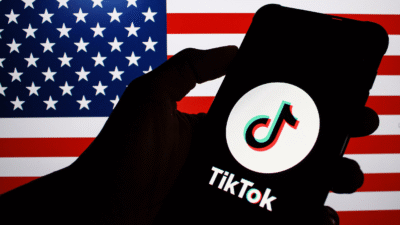Universal Music Feels the Sting from Streaming Saturation
Taylor Swift may be signed to the label, but Universal Music Group somehow can’t find a way to make its business work.
Sign up for smart news, insights, and analysis on the biggest financial stories of the day.
If you’re in the music business, Taylor Swift is not the problem, everyone agrees. And yet Universal Music Group somehow still can’t make it work.
The giant record label with mega-stars including Swift and Lady Gaga reported its second-quarter financials late on Wednesday. The result? A giant sad trombone noise. Subscription revenue grew much slower than predicted, sending UMG’s shares on a dramatic 24% decrescendo.
The Day the Music Died
UMG’s financials showed that its subscription revenue grew at a rate of 6.9% year-on-year for the second quarter, well below analysts’ predictions of 11%, while its streaming revenue fell 4%. UMG blamed that fall on a “deceleration in growth at key advertising-based platform partners as well as shortfalls on certain platforms related to the timing of deal renewals.” It was coy on which exact deal renewals, but in January it got into a public spat with TikTok about the terms of licensing its artists’ music to the social media platform.
TikTok and UMG managed to squash their beef in May, but it looks like UMG’s problems go beyond just one social media platform:
- Chief Financial Officer Boyd Muir said Thursday that Spotify and YouTube and others had driven strong subscriber growth, but not every platform had performed so well. Spotify reported better-than-expected user growth in its own financials.
- “It has been evident for years now that subscription streaming is reaching an inevitable saturation point in mature markets like the US,” Tatiana Cirisano, senior music industry analyst at MIDiA, told The Daily Upside.
“Although there is still much growth to be had globally, that growth is offset by lower average revenue per user (ARPU),” Cirisano added. She said that the music industry has seen that saturation point coming for a while, so there’s an increased emphasis on monetizing “fandom.” Cirisano pointed to the fact that while UMG’s streaming revenues were lackluster, its revenue from merchandise was up 45%.
Spot the Difference: Spotify’s continued growth while UMG stagnates may be explained by Spotify finding success in the Global South, Cirisano said, where UMG artists are less dominant. “If this is the case, UMG would be getting a double discount, so to speak, because not only is the revenue Spotify collects from these regions smaller due to weaker ARPU, but UMG is getting a smaller share of that pie than they would in Western markets,” she added.












